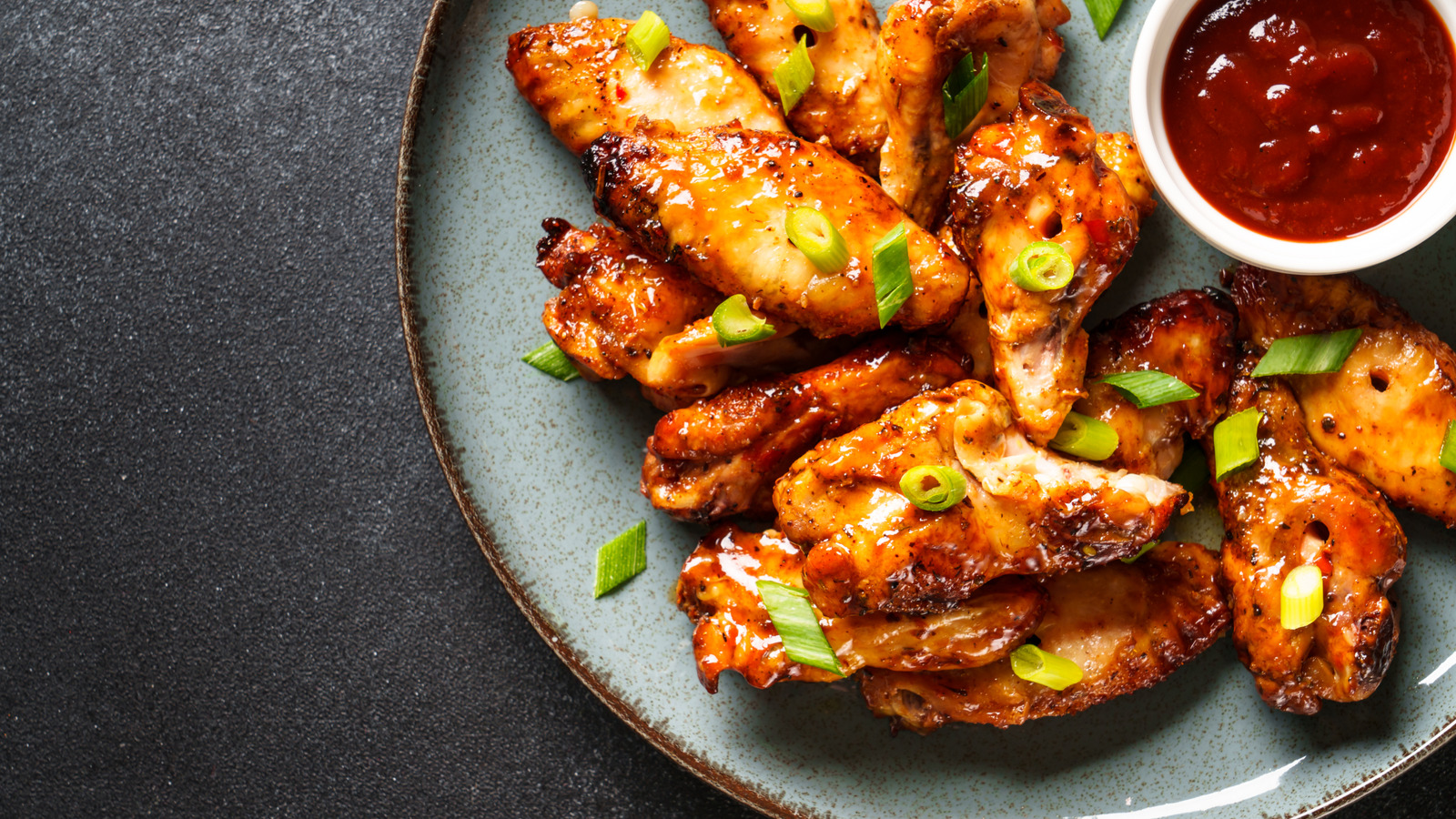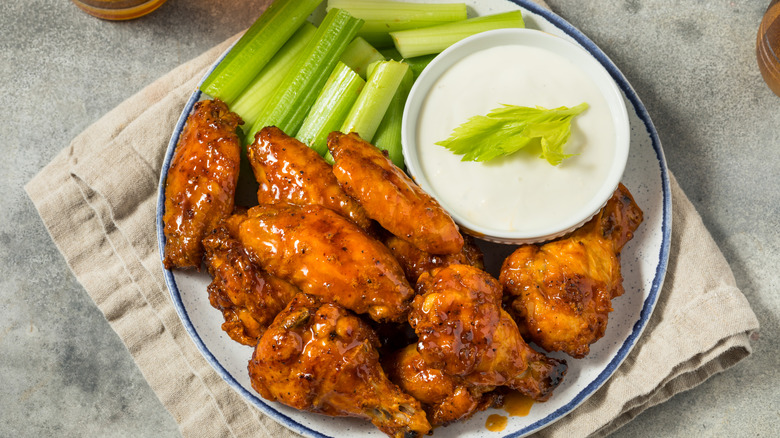While it may seem strange to imagine watching, say, the Super Bowl, without a platter of crispy chicken wings slathered in vinegary hot sauce, wings have not always been a hot item in American restaurants, bars, and grocery stores. Up until the ’60s, they were broadly considered a relatively useless part of the bird. With minimal meat in comparison to breasts, legs, or thighs, their image as an overly boney piece of chicken meant they were mostly used to make chicken stock.
The turning point where wings went from waste to beloved snack or appetizer is typically believed to be the invention of Buffalo wings. Perhaps the most common story is that they were devised in Buffalo’s Anchor Bar, where owner Teressa Bellissimo was tasked with whipping up a snack for her son and his friends. Based on what the bar had in stock, she coated some wings in a cayenne pepper hot sauce and butter, fried them, and served them with celery and blue cheese dressing. They were a success, and found their way onto the permanent menu. That said, Buffalo wings’ history is contested, and another Buffalo restaurateur, John Young, claimed he was serving deep-fried spicy wings beforehand, although the “Mumbo sauce” he served with them was closer to a tomato-based barbecue concoction. In any case, no matter who devised the original recipe, Buffalo is considered where wings’ American domination kicked off. However, it took a while for fried wings to ascend to the position of America’s (arguable) top bar snack.
From Buffalo to the nation
The popularity of Buffalo wings led them to start spreading beyond Buffalo — for example, the Buffalo Wild Wings chain was founded in Ohio in 1982. As the ’80s continued, the trend got turbo-charged. During that decade, fatty foods were demonized as unhealthy and the source of all sorts of health problems, leading many Americans to become fixated on the idea of low-to-no fat foods. So, chicken breasts became popular, and producers started selling these pieces of the bird. Previously, it was more common for the whole bird (wings included) to be sold, so suddenly, there were plentiful excess wings floating around.
This meant that wings became very cheap. Bars picked up on this opportunity, and started selling them cheaply as a snack food. Their individual pieces made them easy to share, and bar owners believed that the salt and heat of hot wings encouraged customers to buy more beer. Then, in the early ’90s, Buffalo’s football team played in the Super Bowl four years in a row, drawing more attention to the city — and by extension, its bars and their wings. So, the trend spread. With bars being a hot spot to watch football, the two became intertwined and now, Americans reportedly eat some 1.45 billion wings during the Super Bowl alone. As wings got popular, chefs cottoned onto their versatility, and countless other options for seasonings and glazes arose. So, while Buffalo wings may have been the spicy coating that started it all, it’s now just one of many options ranging from Korean dry-rub wings to balsamic chicken wing glazes.






